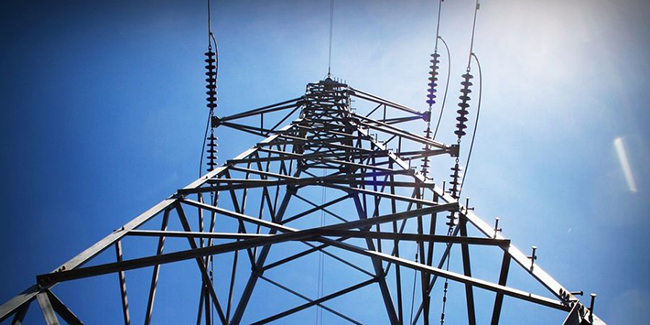Struggling Namibian consumers barely dealing with rising debt levels, inflationary pressure and dwindling disposable income now have to deal with another price hike that will certainly fuel an increased cost of most other goods. This latest price hike, which was announced by the Electricity Control Board (ECB) last Thursday, comes as businesses and consumers are still trying to recover from Covid-19 that hit the domestic economy while in a recession, thus exacerbating a precarious situation even further.
The ECB heaped more pain when they announced an increase in bulk electricity tariffs by 8.97% from N$1.8222 to N$1.9856 per kilowatt-hour (kWh) for the 2023/24 period as of 1 July 2023.
This increase was granted after the Namibia Power Corporation (NamPower) requested a 16.87% increase in electricity tariffs for the 2023/24 year, which would have resulted in an increase from an average of N$1.8222 per kWh to
N$2.1296 per kWh.
The ECB increase approval means regional electricity distributors (REDs), local authorities and large power users like mines which buy electricity directly from NamPower pay more for electricity, which indirectly affects local consumers.
Announcing the increase, ECB CEO Robert Kahimise said the electricity regulator considered several factors, including the impact of the tariffs on the electricity supply industry, consumers, and the economy at large.
“The current economic climate was considered. The ECB is cognisant that prices of goods and services have been increasing, and this is negatively affecting consumers. Since the tariff is increasing above the current inflation rate of 6.1% for April 2023, at 8.97%, it is expected that the tariff increase will put further pressure on future inflation and therefore on prices of goods and services,” he observed.
In its inflation report for March 2023, local stock brokerage Simonis Storm (SS) said depending on what the ECB approves, they projected higher electricity tariffs as a risk to inflation. This is due to the fact that the housing and utilities category has the largest weight in the consumer price basket (28.36%).
Over the last number of years, the electricity tariff has also included an amount to cater for the long-run marginal cost (LRMC), which is intended to ensure a smooth tariff path for the future. This would be needed when NamPower experiences cash flow challenges due to expensive power supply options or building new power plants.
LRMC funds may be used to cushion customers from unexpected tariff hikes, or in situations where the economy is depressed and/or to build new power plants that will ensure an affordable projected tariff path. Kahimise said a total amount of N$200 million was made available to mitigate the impact of NamPower’s high tariff on consumers and the economy.
“For the period 2023/24, it is forecasted that the national demand will be met 59% by regional imports and 41% by local generation. In mitigating the possible shortage of electricity, the Namibian government - through the line ministry - has established a technical committee to ensure the security of electricity supply in Namibia is maintained,” he reiterated.
The regulator stated that future tariffs are expected to increase in line with inflation, and to cater for new generation capacity. Commenting on the tariff hike, local economist Omu Kakujaha-Matundu said “NamPower is milking consumers dry, just to keep the lights on for Namibia”.
“Bulk electricity tariff increases are passed on to the consumer. Unless NamPower gets its act together and increases its capacity, we will continue seeing these crippling tariffs on the general economy and on the hard-pressed consumer,” stressed the economist.
NamPower debt collection
Meanwhile, national power utility company spokesperson Tangeni Kambangula said in a statement last week that customers owe it over a billion dollars.
She noted that the situation has concerned NamPower for a considerable time, and if left unattended, would detrimentally affect its duty to supply electricity to the entire country on a sustainable basis.
Thus, NamPower would suspend electricity supply to defaulting customers from 5 June 2023, unless these customers settle their full outstanding amounts before that date. Many local authorities owing NamPower have now started meeting with the utility to pave the way forward in order to keep the lights on. At a recent Central-Northern Regional Electricity Distributor (Cenored) meeting, acting CEO Gawie Awaseb said Cenored’s books are up to date, and only their joint venture (JV) with the Okahandja municipality is in arrears. The Okahandja municipality is the largest shareholder in the JV with 60%, while Cenored owns 40%. After the meeting, Awaseb assured Okahandja residents that their lights will stay on. “The JV came about in 2015 when the Okahandja municipality owed NamPower about N$64 million due to non-payment of services provided to the municipality. Through the JV, we only owe NamPower about N$2 million,” he added.
However, Kahimise on Friday said the ECB acknowledges the NamPower plan should have been implemented systemically at much earlier stages to prevent it from threatening current economic recovery. “The ECB will engage NamPower to fully understand the implementation process of the plan, and will work with NamPower and the affected licencees to try to find a sustainable solution to the matter,” he continued.
NamPower is expected to host a media briefing tomorrow to tackle the matter. - mndjavera@nepc.com.n


